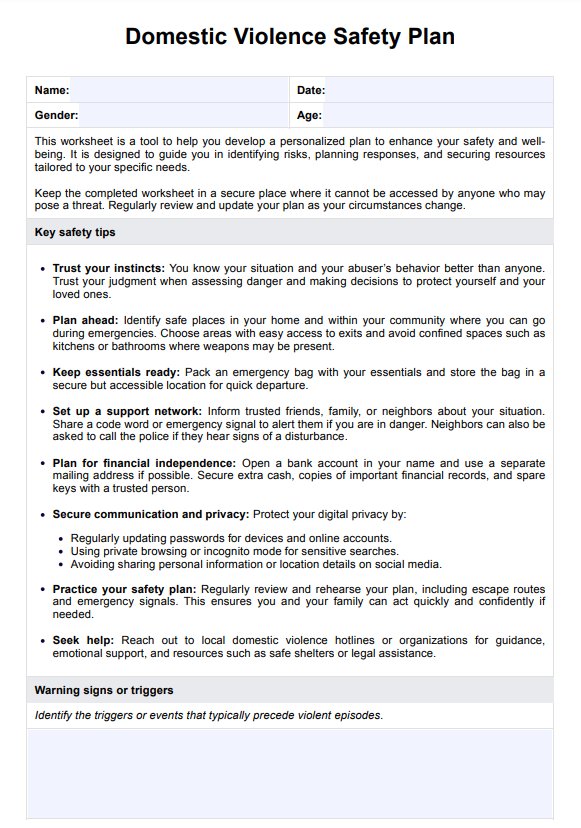A Domestic Violence Safety Plan is a personalized, practical plan designed to help individuals experiencing violence protect themselves and their loved ones. It involves identifying safe places, escape routes, and trusted resources to ensure physical and emotional safety. By preparing in advance, such as packing a bag with important documents, money, and essentials, individuals can leave quickly and safely if necessary. Safety plans also address special considerations, such as protection orders and building security, to create a comprehensive approach to staying safe.

Domestic Violence Safety Plan
Empower and support clients for potential domestic violence situations with a Domestic Violence Safety Plan. Get this PDF for free and promote client safety.
Domestic Violence Safety Plan Template
Commonly asked questions
When working with patients in abusive situations, prioritize their physical safety and emotional health. Assess immediate danger and help patients identify the safest way to leave home if necessary. Offer practical guidance, such as creating code words to alert trusted friends, securing financial independence, and updating communication security on phones and computers. Additionally, be aware of special considerations, such as protection orders, gender identity, or the presence of children, to ensure the safety plan is comprehensive and tailored to the patient’s needs.
Safety plans are personalized strategies designed to enhance safety for individuals experiencing domestic violence. These plans include identifying escape routes, setting up a code word to alert a trusted family member, and preparing essential items such as a rental agreement and identification. A safety plan helps survivors anticipate risks and act quickly during emergencies to protect themselves and their loved ones.
EHR and practice management software
Get started for free
*No credit card required
Free
$0/usd
Unlimited clients
Telehealth
1GB of storage
Client portal text
Automated billing and online payments











